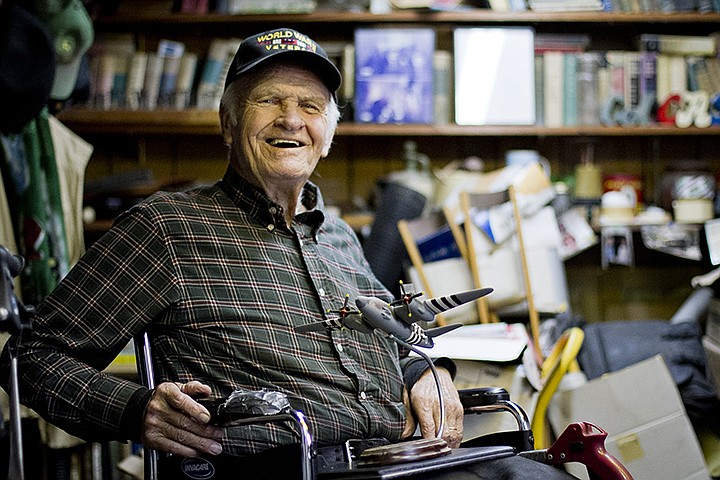While many thousands of American air, sea and ground servicemen stormed France's Normandy beaches 75 years ago, others like Ralph Miller briefly remained state-side helping from a distance.
From August 1943 to August 1944, Miller, who at that time was serving as a flight officer and instructor in the U.S. Army Air Force, trained medium bomber pilots at Lake Charles, La., Army Air Force Base.
"Back then, there were four big deals that pilots looked forward to," Miller, now 99 years old, said. "The first was learning how to fly a warplane solo - then second, being able to fly it from one destination to another, then third, learning how to fly it in formation with others and finally the fourth thing - learning how to be prepared for the ultimate thing-getting shot at. I had to teach them all four all of those."
Prior to becoming an instructor pilot himself, Miller, who graduated from flight school, Feb. 16,1943, had to finish ground school along with primary, basic and advanced flight training - all in Texas starting in the latter part of 1942.
After earning his wings, the Army sent Miller to the Avon Park Bombing Range in Florida, which was a B-26 Marauder medium bomber base. There, Miller became awed and inspired by this warplane's performance while undergoing tactical combat flight training in it, for several weeks.
"The B-26 was one of the hottest planes flying at that time," he said.
Like most everyone else stationed in the U.S. at that time, Miller said he learned about the D-Day landings through radio news broadcasts, newspapers and news reel (shown in movie theaters back then).
However, like most others, Miller's job as an flight instructor was his priority and he concentrated mostly on that. He would eventually be promoted from the rank of flight officer second lieutenant by January 1944 and eventually to first lieutenant by July of the same year.
"During that time, we usually heard about things like D-Day, about two or three days after they happened," Miller said. "But for me, things didn't really change too much. I just kept training other pilots."
Uncle Sam would eventually deploy Miller to Europe for combat flights starting in September 1944. There, he would go on to complete 55 tactical bombing missions - aimed mostly at taking out small, militarily important targets, such as enemy railway junctions, supply convoys, radar installations, communication stations, fuel supply depots and ammunition storage depots - until the they ran out of targets by about April 1945.
Born Nov. 26, 1919, in Kokomo, Ind., Miller grew up on a farm in Fulton County, not far from Rochester, Ind. He graduated from Rochester High School in 1937.
After working in a flour mill for a couple of years following graduation, Miller enlisted in what was still then known as the U.S. Army Air Corps. Miller accompanied his older brother, who registered for the draft Oct. 30, 1940, at Fort Benjamin Harrison in Indianapolis.
Following the war, Miller received his discharge and eventually moved to Texarkana, Texas, in 1950 - where he still lives.
Even though the Normandy landings didn't really directly affect Miller when they happened, he nevertheless noted the occasion.
"I made a notation of it in my flight log book, by entering the date 'June 6' and then I drew a star by the date and wrote out next to it - 'I need to be there,'" he said.

